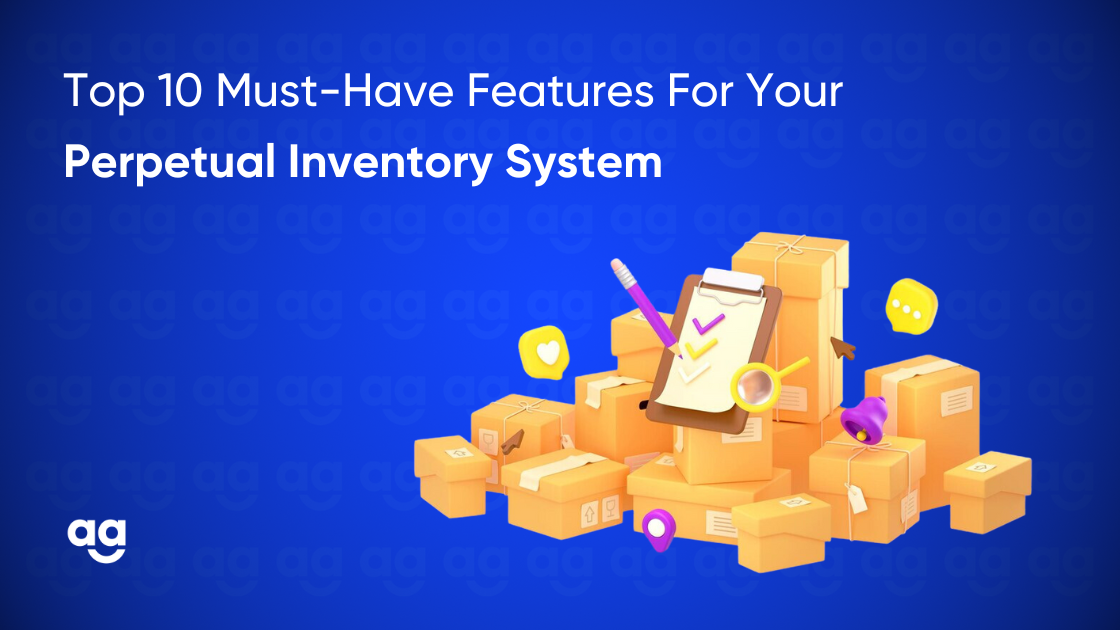Introduction
Managing inventory efficiently is important for various reasons like smooth operations, profitability and ensuring customer happiness and a crucial aspect of accomplishing these goals is a good perpetual inventory system. It provides you with a lot of benefits which help in efficient inventory management.
Lets understand about top 10 features your perpetual inventory system should be having but before that lets understand perpetual inventory is.
What is perpetual inventory ?
The perpetual inventory system helps you take care of a lot of things like maintaining inventory records after every transaction involving buying and selling of goods. In this system when a stock item is sold, the total cost of goods sold increases and records of all the accounts are updated, guaranteeing that the inventory account accurately represents the amount of products that are either in stock or in storage.
10 Features Your Perpetual Inventory System Should Have
1. Real-time tracking and updates
The perpetual inventory system helps businesses track everything in real-time which includes inventory levels, purchases, and sales. This ensures that all the data and information is reliable and up to date which helps the decision makers to respond quickly on any changes in supply and demand of goods.
2. Integration with Point of Sale (POS) systems
A smooth link between your perpetual inventory system and point-of-sale (POS) system is necessary for data entry automation. After a sale, the system needs to automatically update the inventory levels, eliminating errors and saving valuable time that would otherwise be needed for manual data entry.
3. Barcode scanning capability
The speed and accuracy of an inventory management process is accelerated by barcode scanning. Barcode scanning increases the effectiveness of overall operations which results in less chances of human errors throughout the whole process.
4. Multi-location support
For perpetual inventory systems used by businesses with many warehouses or retail locations, multi-location tracking is essential. This feature helps you prevent situations where you have an overstock or stockout by guaranteeing that you have a consistent view of your inventory across all locations.
5. User access controls
To guarantee data security and integrity, your perpetual inventory system should include robust user access controls. Different employees within the organization should have varying levels of access based on their jobs in order to ensure accountability and prevent unauthorized alterations.
6. Forecasting and demand planning
Integration with forecasting and demand planning systems is crucial for projecting future inventory requirements. By analyzing historical data and market patterns, your perpetual inventory system can help you determine the proper stocking levels and prevent excess inventory or stockouts.
7. Alerts and notifications
Proactive alerts and notifications are very helpful in identifying any issues before they become significant. Notifications allow for the quick remediation of low stock levels, expiration dates, or abnormal sales trends, thus preventing supply chain disruptions.
8. Reporting and analytics
A robust reporting and analytics module is necessary to comprehend the performance of your inventory. Customized reports on inventory levels, turnover rates, and other important metrics help managers make data-driven decisions, improve stocking strategies, and identify areas for improvement.
9. Mobile accessibility
In today’s mobile-centric environment, having a perpetual inventory system that is accessible via a mobile device is helpful. By allowing key employees to monitor sales, inventory levels, and notifications even while they are not in the office, this feature promotes adaptability and responsiveness.
10. Scalability
As your business grows, your inventory management requirements will also alter. Your perpetual inventory system must therefore be scalable in order to accommodate an increase in the quantity of products, clients, and transactions. Scalability ensures that in order to fulfill the demands of a growing firm, your system will remain effective and efficient.
Conclusion
To sum up, effective operations require a strong perpetual inventory system with capabilities like barcode scanning, real-time tracking, and mobile accessibility. Adaptability to changing needs is ensured by integration with user access restrictions, scalability, and forecasting.
These features enable businesses to increase customer satisfaction, avoid interruptions, and make well-informed decisions. Purchasing a thorough perpetual inventory system is crucial if you want to remain flexible and competitive in the ever-changing corporate environment as technology develops.







 Shipping
Shipping







